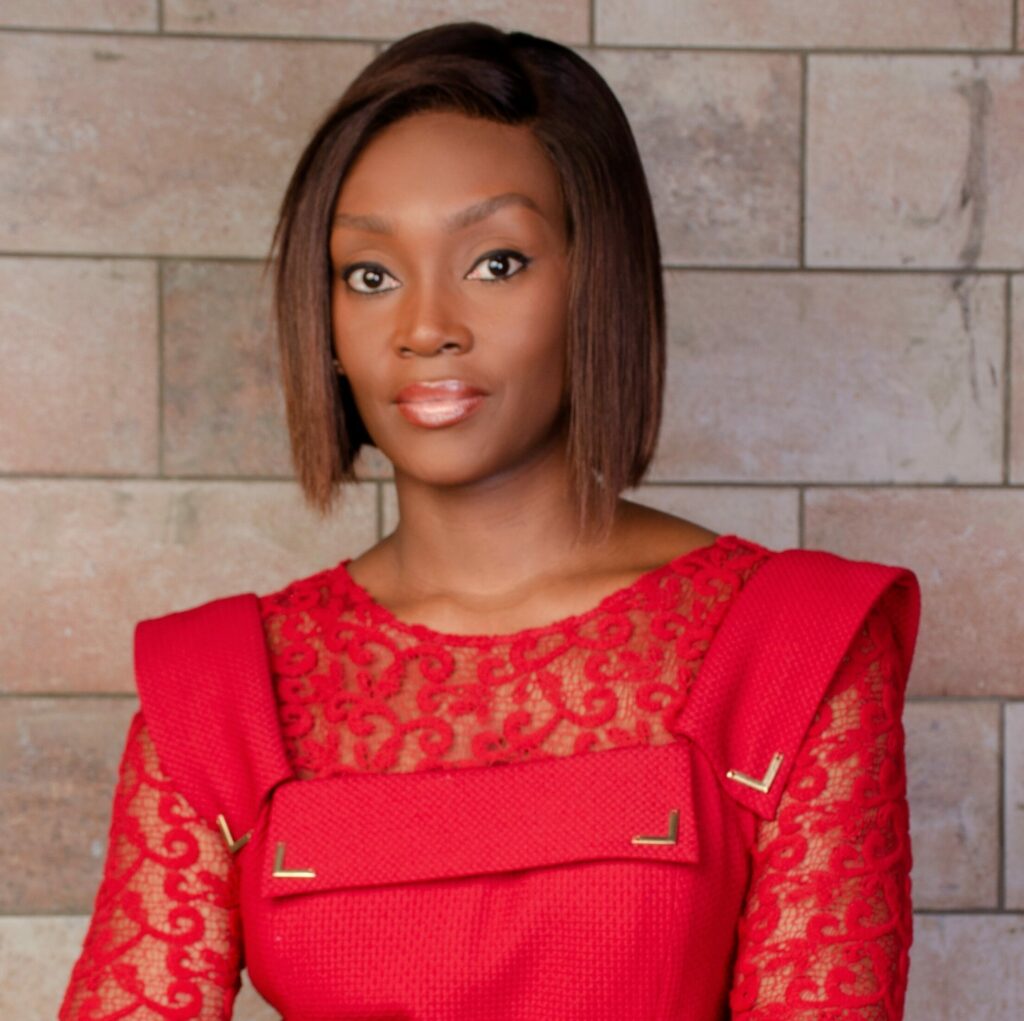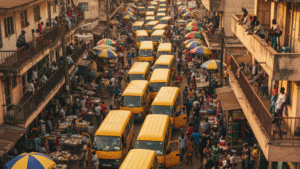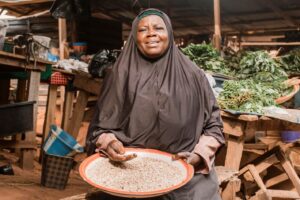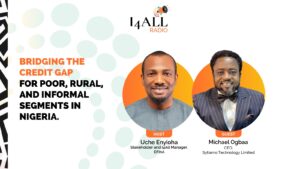“Financial Inclusion will not improve if Nigeria does not address the barriers to ID ownership”. Chinasa Collins-Ogbuo
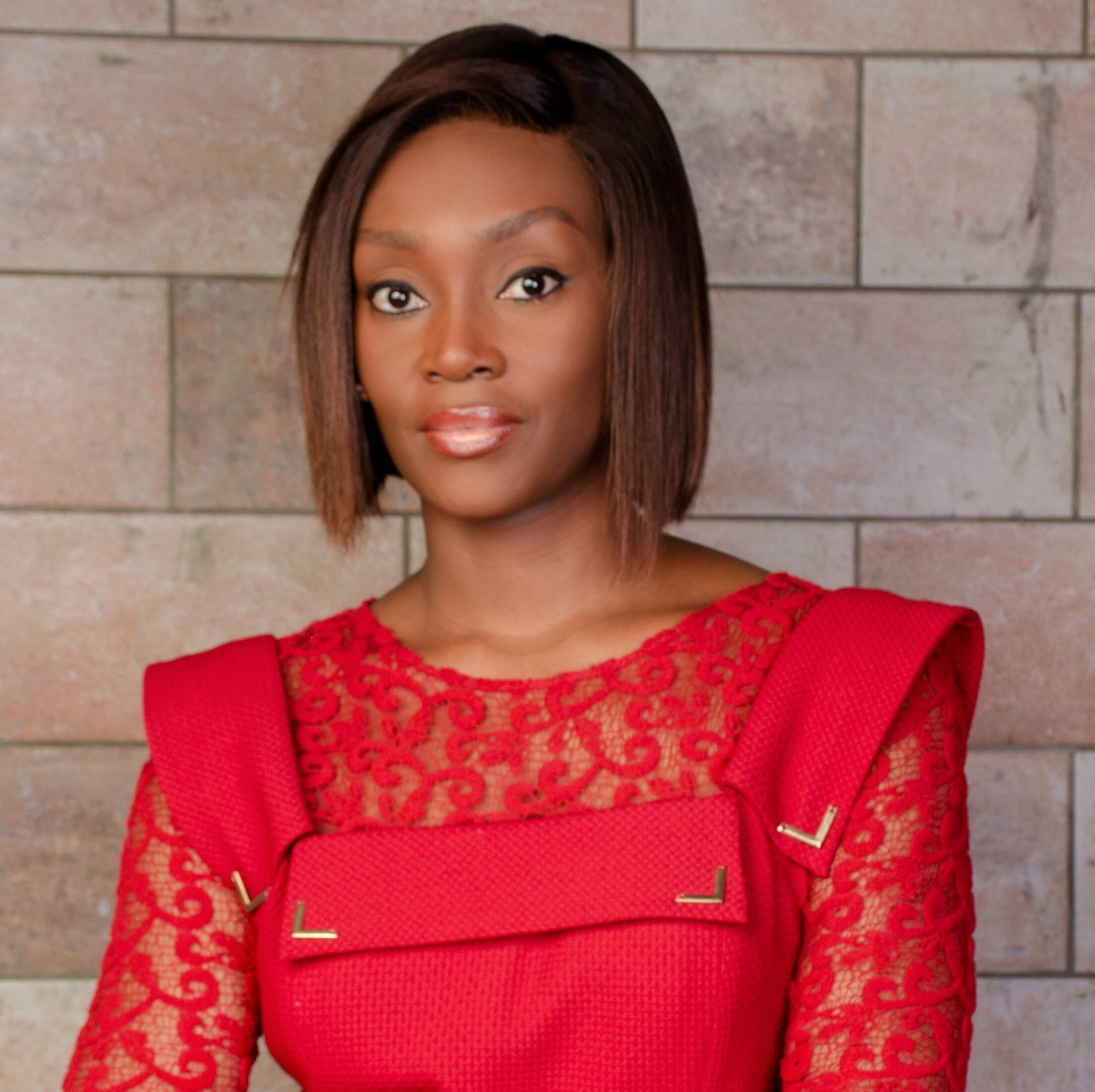
1. Tell us about Inclusion for all and its participation in deepening access to financial services in Nigeria?
Our work seeks to understand the barriers to access for Nigeria’s most vulnerable and marginalised communities, whether they be policy driven, commercially driven or stakeholder driven, and then collaborate with key ecosystem partners to try and overcome them. To lead this work, we have created an internal unit that acts as an advocacy hub to drive awareness raising and accelerate financial inclusion of marginalised and vulnerable communities such as women, youth and harder-to-reach communities.
We know that there are multifaceted challenges that exacerbate exclusion and restrict access to essential government services such as welfare, education and healthcare in addition to economic opportunities and financial services: critical enablers of inclusive growth. The poorer you are, the harder you are likely to find it to transition into the formal economy.
With the view to enabling the economic inclusion of marginalised communities and promoting poverty reduction, the Inclusion for All initiative is an advocacy programme that seeks to deepen our knowledge and understanding of the impact of exclusion on marginalised communities, and on Nigeria as a whole, while advocating for the barriers to their inclusion to be removed. According to EFInA 36% of Nigeria’s adults, or 38 million of our country’s adults are financially excluded.
Nigeria has Africa’s largest population, but also has the highest number of people living in poverty. There is a tremendous opportunity to deepen access to finance, markets and foster an environment where the economy generates prosperity for all, if we find a way to pull these communities into the formal economy. We are focussing on boosting access to digital financial services by exploring partnerships with stakeholders and interest groups such as researchers, civil society organisations, technical experts, policymakers etc. committed to overcoming the challenges faced by those at the bottom of the pyramid. More important, is their willingness to co-create solutions that address the urgent needs of un(der)served communities. We have been identifying the barriers that hinder financial inclusion among beneficiary communities and are creating spaces for dialogue that provide the platform for their voices, concerns and challenges to be heard. Additionally, we are engaging key policymakers and regulators to elevate the ecosystem’s knowledge base as we establish partnerships and cultivate practical solutions such as progressive policy change.
2. In your recent report that explained the linkages between poverty, ID ownership and financial inclusion, more females than males cited lack of identity as the reason for not owning a bank account. What is your take on this?
This insight validates existing data about the disproportional advantage men have over women when it comes to access to ID. According to World Bank research, most citizens without ID in sub-Saharan Africa and Asia are women and the poor – to corroborate this, the 2017 Global Findex survey found that 44% of women in low-income communities do not have an ID compared to 28% of men. In addition, the NIN enrollment data from NIMC in September revealed that 43% of females were enrolled compared to 57% males. Further, as evidenced by the findings from the World Bank’s Barriers to the Inclusion of Women and Marginalised Groups in Nigeria’s ID System study, some socio-cultural norms and hindrances leave women less likely to access ID and economic participation. For instance, women’s higher likelihood of illiteracy, and for some groups of women, their lack of familiarity with dealing with officials in public spaces increases the registration process’s difficulties, which impedes their access.
As NIMC continues its efforts to enrol more Nigerians, overcoming gender-based barriers that hinder access to national identification and address the intersectionality of issues faced by disadvantaged members of society such as the aged, disabled, and IDPs will be imperative to reaching the government’s objective of achieving ID enrollment for every Nigerian.
Challenges exist within our country’s context that we have identified elsewhere, such as distrust of the process or management of data or insufficient training of enrolment staff. Learning from common challenges is helpful, but we must encourage the development of place-based solutions that recognise these learnings but srespond to Nigeria’s socio-cultural norms and leverage the opportunities within our economy.
3. What’s your take on Nigeria’s current financial exclusion rate that has about 40 million of the adult population still excluded from the country’s financial system?
The persistently high level of exclusion and slow progress towards inclusion targets is the core reason we do our work. While the percentage of people excluded from the system in Nigeria reduced in 2020, the absolute number of people increased, because the population is growing faster than people are being included. Our research indicates there are clear correlations between identity ownership, other demographic factors, income, and financial inclusion. As such, we know that Nigeria’s adult financial inclusion rate cannot improve if we do not effectively address the barriers to ID ownership. This is why we are currently focused on expanding access to identity, alongside other work on other barriers.
The 2020 A2F EFInA survey shows that 73% (43m) of unbanked adults do not have the ID documents required to open a Tier 3 bank account – given the size of our country’s population, identifying and sustainably addressing the barriers to ID ownership will be imperative to accelerating the enrollment process. So far, NIMC, among other partners such as enrollment agents in the private sector, have led a robust strategy to achieve ID enrolment for every Nigerian, but there remains work to do, and we are ready to play our part to advance the process.
While the overall number of 40 million is significant, it’s also important to look at how that number is segmented. Women and rural households — and individuals based in the country’s north-west region are considerably more likely to be excluded and face financial access barriers. The rise of agent banking and growth in digital financial services are creating opportunities to accelerate progress toward financial inclusion; however, there are other vital areas to address to boost the inclusion rate, such as affordability and pricing, in addition to the suitability of financial products for consumers – we know that we have to focus on all of these issues to materially drive financial inclusion. Furthermore, prioritising financial education is equally important to ensure that consumers get the most out of products, and broadening access to credit so people in lower-income bands can benefit from the suite of financial services available in the market.
4. How is ID Inclusion a motivator for formal financial inclusion, is there a causal relationship?
As evidenced by our preliminary findings shared ahead of Nigeria’s National Identity Day – there is a strong correlation between ID ownership and income level. The poorer you are, the less likely you are to have an ID. Furthermore, we found that in 2020, there was a significant rise in the number of respondents within the EFInA survey who registered ID as the single reason they couldn’t open a bank account nor access formal credit through a bank account.
While this tells us that ID is a requirement for access to formal banking, it does not confirm that owning an ID will motivate more Nigerians to hold bank accounts. But what is clear is that ID ownership is an essential enabler of financial access and so without it, we cannot achieve financial inclusion goals. A key element of the NIMC/World Bank ID programme mandate is to ensure that the NIN, beyond just ownership, is a tool that stimulates access to formal services. We believe that if Nigeria’s Identity Programme and Financial Inclusion strategy programme is implemented successfully and inclusively, ID ownership will be one less barrier that hinders the financial inclusion of the un(der)served and, most often the hardest to reach – and it is these communities that stand to gain the most.
5. Why is targeting the poor and marginalised populations important?
Poor and marginalised communities without formal identification are disproportionately disadvantaged by their inability to do the things most citizens can do, like own property, a registered business or access essential services such as formal employment or finance. But the lack of identification also severely restricts the ability of the government to support them with social services, or palliatives. This exclusion from both state aid, and self-help, is why we focus on these communities. As previously expressed above, poorer and marginalised segments of society stand to gain the most from inclusion. ID ownership, which is essential for financial inclusion, is one of the building blocks we need, to provide a route from poverty to prosperity for millions of poor and marginalised citizens. Financial inclusion is regarded as essential for achieving 8 of the 17 United Nations Sustainable Development Goals. These are SDG1, on eradicating poverty; SDG 2 on ending hunger, achieving food security and promoting sustainable agriculture; SDG 3 on profiting from health and well-being; SDG 5 on achieving gender equality and economic empowerment of women; SDG 8 on promoting economic growth and jobs; SDG 9 on supporting industry, innovation, and infrastructure; and SDG 10 on reducing inequality.
Africa’s most populous nation should not overlook the urgency and opportunity of national ID ownership for all citizens. Non-participation in the formal economy restricts our government’s ability to verify the identities of our vast population, which is key for fraud prevention, and maintaining national security. ID ownership is also crucial for Nigeria’s ability to effectively administer health services and public health management – which is critical for consistent and appropriate care for those in need, especially during a global pandemic.
6. What are some of the lessons Nigeria can learn from other markets that have had similar challenges in ID registration of rural and harder-to-reach communities? Furthermore, are there comparable foundational ID best practices that Nigeria can learn from and adapt, to ensure the poor and marginalised are not left behind?
The World Bank, 2019 study – ‘ID Enrollment Strategies: Practical Lessons from Around the Globe’ highlights the following countries experiences with navigating the complexity of accessing hard to reach communities, which can be adapted for our climes.
For instance, in culturally conservative Pakistan, where women are often disadvantaged owing to socio-cultural norms. A deliberate approach was taken by the country’s National Database and Registration Authority (NADRA) by opening fifteen (15) women-only registration centres, staffed entirely by women. Women managers, data entry operators, and drivers provided the solution to overcome the reluctance of women or their families that often contribute to a women’s decision to register. A gender-conscious approach such as this could be valuable in the Nigerian context to ensure the inclusion of the marginalised.
In Malawi, to circumvent the power supply challenge, biometric registration kits were solar-powered and included digital cameras, laptops, fingerprint scanners, card readers and other peripheral equipment. Given that they were in use for approximately 12 hours per day, extra batteries were carried. Similar innovation could be welcomed in Nigeria, where the inconsistent provision of electricity is experienced across the country.
In Rwanda, vulnerable persons were reached through groups that represented them and through home visits if they could not go to the registration point by themselves. In addition to these suggestions, incentives could be created for registration processes such as special registration days, which were organised in the village square in rural areas, accompanied by festivities and food and parties for children. This promoted a perception that certification ownership is a cause to be celebrated rather than an administrative process to avoid.
One of the considerations that is often overlooked is the type of equipment that you procure. Is it portable? Does it have internet connectivity? Is it easy to use? Poor and vulnerable communities are often hard to access, and so these considerations are important. In Bolivia and Malawi, mobile brigades were used to provide temporary registration offices within vans or trucks that could travel to those communities unable to get to fixed enrolment locations.
Improving the success of Nigeria’s registration process requires an assessment of the various difficulties faced by respective demographics, geographies and beneficiaries and designing specific solutions that meet their unique requirements. That is an area where we are actively working to test approaches that might suit the Nigerian context.
Building on the tactics of countries such as Pakistan, Bolivia, Malawi, and Rwanda would certainly support Nigeria’s ID enrollment drive. Furthermore, the World Bank’s ID4D Principles on Identification for Sustainable Development offer a valuable set of principles covering three pillars: inclusion, design and governance. Guiding our approach by these best practices but applied to the challenges and opportunities within our local context would ensure that the poor and marginalised are front and centre of our enrollment strategy and benefit considerably.
7. How will this initiative catalyse the necessary changes for intended impact?
We are focussing on research to build a credible evidence base that strengthens policy makers’ understanding of the barriers populations across the country face. In addition, we are leveraging our convening power to engender meaningful and informed conversations and action among the relevant development partners within the ecosystem. We expect the development of these targeted interventions to progress into impact-driving recommendations, for which the partners can then collaboratively design appropriate policies and measures that boost inclusion.
8. As an advocacy hub, what are some of your recommendations in deepening the financial inclusion rate in Africa’s most populous nation?
The barriers to financial inclusion have endured for years in Nigeria and more broadly, Africa. We see expanding access to digital financial services and promoting electronic payments as a critical component to banking the un(der)banked. This can spark innovation and lead to developing more products that reach a more significant proportion of societies. Moreover, as the gender gap widens in access to formal financial services, collective efforts are mission-critical to address the barriers to financial inclusion for women, in particular. Our overarching focus and consistent recommendation is the urgent need to inspire collaboration, knowledge exchange and partnerships that leverage technical expertise and insight within the ecosystem across a broad set of ministries, levels of government, private companies and non-governmental organisations. A concerted effort will result in the success we are targeting, and deepen financial inclusion – so every citizen stands to gain.


